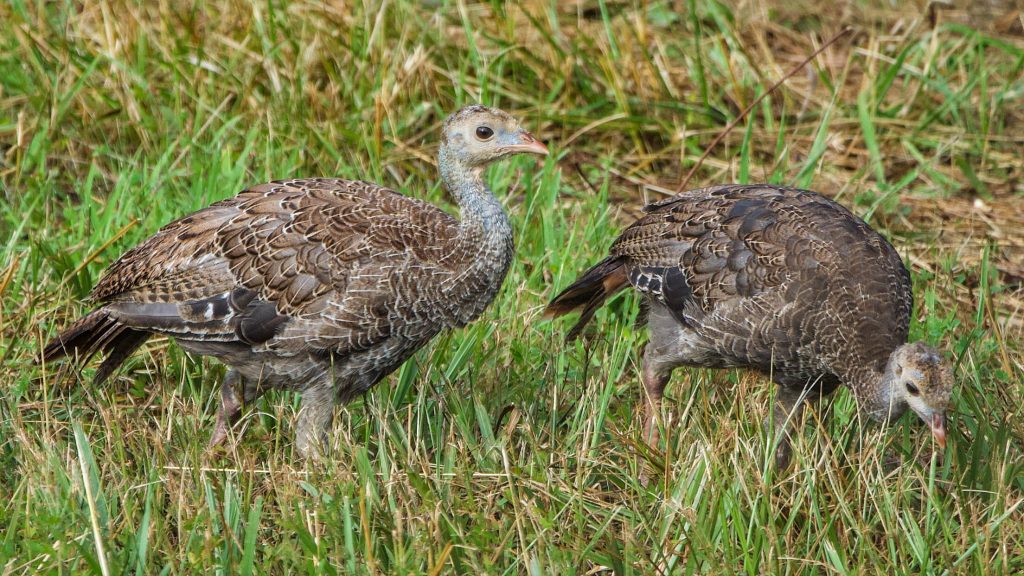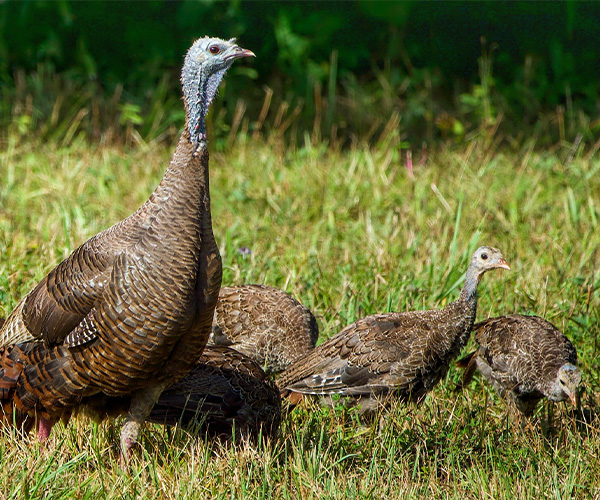Forthcoming Poult and Hen Nutrition Data Could Help Wild Turkey Habitat Managers
The NWTF invests in new research that examines the diets of hens and poults and the habitats best suited for them.
As part of its 2023 investment in wild turkey research, the NWTF is helping fund a new project led by Kansas State University; the Kansas Department of Wildlife and Parks; and the U.S. Geological Survey, Kansas Cooperative Fish and Wildlife Research Unit.
The nutrition research is a component of a more extensive overall demographic study across the state that seeks to update critical wild turkey data, including survival, nest success, hunter influence and more.
The poult and hen forage ecology aspect of the study will occur in three different study sites in Kansas – including Trego, Lincoln and Osage counties – and will encompass areas inhabited by both Eastern and Rio Grande wild turkeys.
Both subspecies of wild turkeys were accounted for in the state’s past brood surveys, which measure poults per hen, a ratio that wildlife managers use to measure the stability of a population. In 2021, the statewide poults-per-hen ratio in Kansas was 1.2, and in 2022, the ratio was 1.4.
Anything below two poults per hen indicates a declining wild turkey population.
To establish a poults-per-hen ratio of two or higher, the success of a hen raising a healthy brood and recruiting poults to juveniles is essential. The emerging research will examine the diets of poults and hens in their most critical stages for recruitment: the first two weeks for poults and nesting periods for hens.

“The importance of food resources from hatch to a flighted state has been well-reported, but we lack detailed knowledge of specific food resources selected by poults during this vulnerable period,” said Dan Sullins, Ph.D., assistant professor at Kansas State University. “Poults can rely on food resources from the yolk sac for the first three days of life, but invertebrates are needed to fulfill the 28% protein requirement from 3-14 days old. Previous studies of poult diets have involved either low sample sizes of wild individuals or were studies that have been conducted on domestic poultry. A better understanding of poult diets and how diets vary among landscapes in Kansas is needed and now achievable using modern fecal DNA metabarcoding approaches.”
DNA metabarcoding is a technique in which researchers will extract DNA from both poult and adult female fecal samples during the breeding season. The fecal DNA content will be used to identify what particular insects and food resources poults and hens use the most during these critical timeframes. Findings could ultimately allow wildlife managers to optimize habitat that produces the essential insect forage key to sustaining a population.
“This study will fill a critical knowledge gap in our understanding of turkey ecology,” said Kent Fricke, KDWP’s small game coordinator and NWTF Wild Turkey Technical Committee representative. “Low production has been the primary driver of declining turkey populations throughout the Midwest and Southeast; however, it remains unclear in some areas whether the limiting life stage is nest success or poult survival. We know that poults require an enormous amount of forage to grow quickly and survive to a fledgling. A key assumption of turkey management is that as long as poults have access to high-quality brooding habitat, the forage they encounter there — primarily insect forage — will be of high enough quality to meet their growth needs. However, there are important reasons to test this assumption. First, we’ve experienced landscape-scale declines in insect abundance and diversity in some portions of the wild turkey range. Second, there is a gradient of what makes fair, good and great brooding habitat. By studying nutrient availability, uptake and overall foraging ecology, we will better understand the extent to which these factors may or may not be limiting turkey populations.”
Fieldwork will begin in January 2024. Researchers aim to capture about 60 female and 60 male turkeys in each study area (about 360 birds total).
The team will assess each bird’s body condition, estimate age and measure other important details about the bird. They will then attach a uniquely numbered riveted leg band to the right leg of each bird. Researchers will also attach GPS-VHF transmitters to adult birds across the three study sites. The transmitters will allow researchers to identify when hens are nesting and off the nest. When a hen is off the nest, the team will locate the nest, record the number of eggs and record a GPS location.
“After poults are hatched at a successful nest, we will attach mini-transmitters to poults, allowing us to monitor them into a juvenile state,” Sullins said. “We are aiming to attach transmitters to 90 poults each year of the project’s two-year timeframe.”
Poults will be monitored at least three to four times per week by locating the brooding hen using VHF and then scanning poult frequencies to determine the fate of each poult.
The team will also develop land-cover maps for each study site by identifying land cover associated with wild turkey habitat, such as food plots, grazed pastures and burned areas. Within each identified patch, researchers will sample vegetation at multiple points during winter, spring and summer to determine available vegetation structure and composition.
Likewise, the team will measure the number of insects within these varying habitats. This information will allow them to look at a unique dynamic of poult survival, poult-and-hen diet and available insect forage amidst different habitat types.
While the work will occur in three distinct study sites in the Sunflower State, findings from the project will have applications beyond state lines.
“Many NWTF members may be surprised at the amount of communication that occurs among state turkey biologists that serve on the NWTF Technical Committee,” Fricke said. “The Technical Committee provides a foundation for discussions at national, regional and local levels by facilitating conversations about emerging issues, research priorities and population trends. The Kansas landscape is quite diverse and hosts both Rio Grande and Eastern turkey populations. Because of this diversity and the broad spatial extent of this study, the research findings will be applicable to a much broader audience in the turkey management community and to habitats in both the Eastern and Western U.S.”
The NWTF will provide updates on this exciting new project as work begins. Stay tuned to NWTF.org.
This project is one of 10 new research projects across nine states the NWTF is funding, with $582,374 invested among these vital projects. These projects are part of a nearly $9 million investment into wild turkey research in 2023, supported by the NWTF and its partners.
